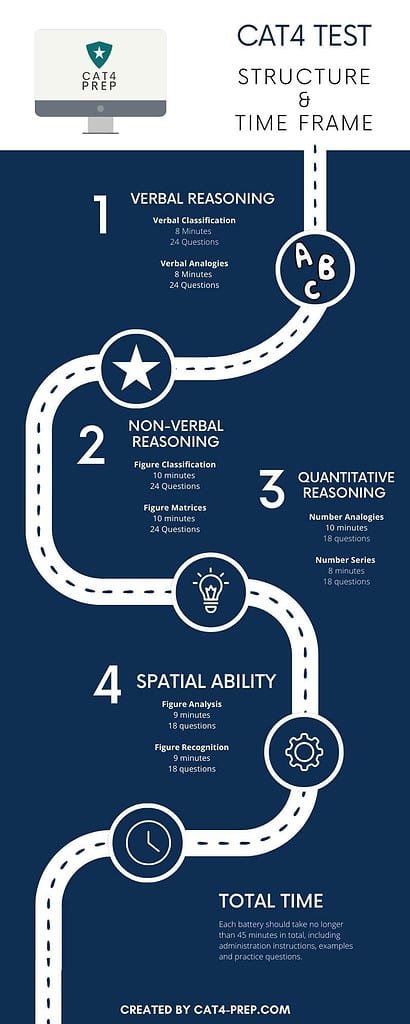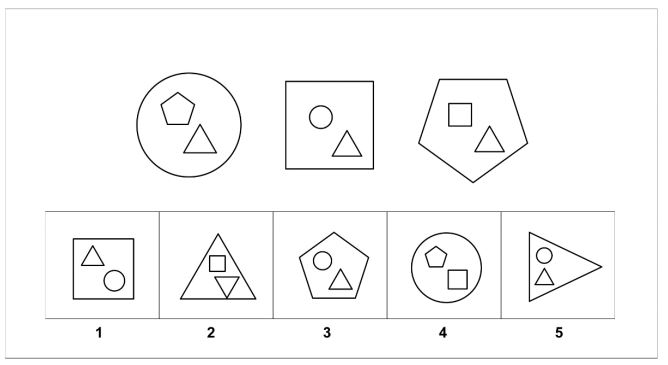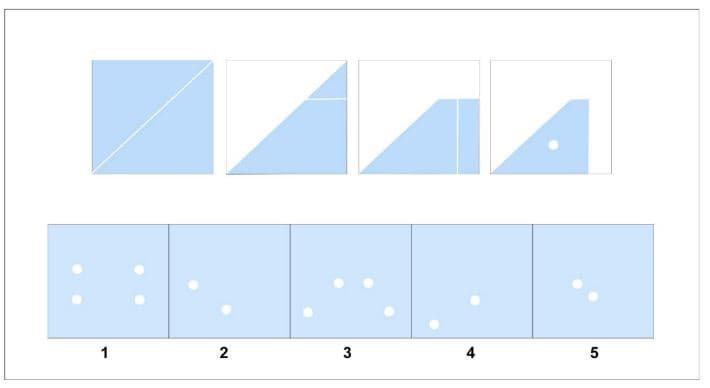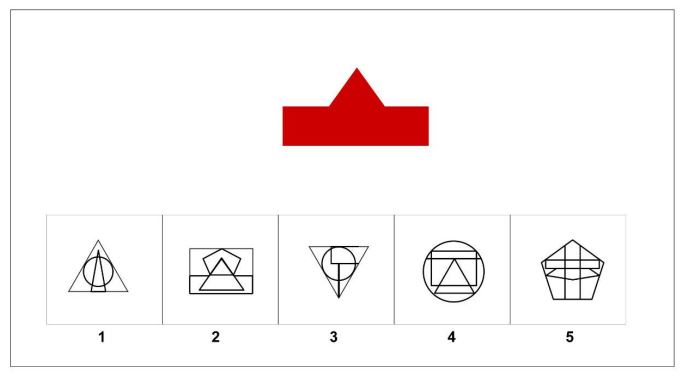Everything you need to know about the CAT4 Level C Test.
Here, you will find a free CAT4 level C practice test PDF.
We would also explore how the test is structured and scored.
Let’s brief you on everything you need to know about the CAT4 Year 6 Test.
What is The CAT4 Level C [Year 6] Test?
The CAT4 (4th Edition Cognitive Abilities Test) is provided by GL-Assessments.
The CAT4 Level C tests students’ academic level and potential in 8 subjects.
The test is also called CAT4 Year 6.
It is a multiple-choice exam designed for 9-11 years old students.
Some schools and programs use it as an admission test.
The exam takes 2 hours and has an online or pen-and-paper version.
Understanding the Sections of the CAT4 Year 6 Test
Your child will face 4 sections, also called batteries.
Each battery has 2 short tests.
The verbal battery tests the student’s Verbal Classification and Verbal Analogy level.
Quantitative battery tests Number Analogies and Number Series comprehension.
Non-verbal battery assesses the student Figure Classification
and Figure Matrices understanding.
The Spatial Ability part measures the student’s Figure Analysis
and Figure Recognition.

How long is the CAT4 Level C Test?
Each test battery has its own time limit, and the test is divided into 3 parts.
Part 1
- Figure Classification: The student has to answer 24 questions in 10 minutes.
- Figure Matrices: The student has 10 minutes to answer 24 questions.
Part 2
- Verbal Classification: 24 questions in 8 minutes.
- Verbal Analogies: 24 questions in 8 minutes.
- Number Analogies: 18 questions in 10 minutes.
Part 3
- Number Series: 8 minutes, 18 questions.
- Figure Analysis: 9 minutes, 18 questions.
- Figure Recognition: 9 minutes, 18 questions.
Take your practice to the next level
CAT4 Level C Practice Test PDF
Use our Free PDF.
The PDF contains CAT4 Level C Sample Questions, Practice Tests and detailed answers.
You can download and print our Free CAT4 Level C Practice Test PDF here.
Free CAT4 Level C Practice Test
The following CAT4 Level C sample questions will help you prepare for the exam.
Make sure to take your time and read the instructions carefully.
Figure Classification Sample Question
The Figure Classification questions show three pictures that share a connection or a characteristic. Choose the answer which shares the same connection/characteristic.

The correct answer is 3.
In this question, the pattern is as follows:
• Each picture contains one big shape with two smaller, same size shapes inside.
• All shapes have small upright triangles in the lower right part of the big shape.
• Two small shapes are always different from each other and different from the biggest shape.
Answers 1, 2 and 4 do not have small triangle upright, in the lower right part.
Answer 5 does have an upright small triangle but the biggest shape is also a triangle, so this breaks the rules of all shapes being different.
We are left with choice 3 as the only possible correct answer.
Take your practice to the next level
Figure Matrices Sample Question
Figure Matrix questions are either 2×2 or 3×3 matrices, comprised of different pictures.
In eachrow and/or column the pictures change in the same way or follow the same rule. Choose an answer choice that goes in the empty box in the matrix that follows the same rule.

The correct Answer is 5.
The pictures consist of two shapes that are placed opposite each other, each entering the space of the other.
They are not closed shapes, so they are not touching.
Shapes in the left vertical column are placed on their side, horizontally while the shapes on the right should be placed vertically. All shapes are different from each other.
Choice 1 is tilted horizontally so that can’t be the answer.
Choice 2 is the square shape which can’t be the answer since there is already a square in the panel.
Choice 3 are two shapes touching.
Choice 4 is just the same as the first given shape only mirrored. The only remaining possible answer is 5.
Figure Analysis Sample Question
Figure Analysis questions present a paper folded several times and then punched with holes.
The answer choices contain unfolded papers with punched-in holes. You need to determine which of the answer choices is the final product of the unfolded punched-in paper.

The correct Answer is 2.

• The paper has one hole punched and is folded 3 times.
• If we open the first crease which covers one hole it would result in the next picture still having 1
hole.
• If we open the second crease the paper will still have 1 hole because folded parts do not cover the hole.
• If we open the third crease which covers, we will end up with only 2 symmetrical holes.
Answers 1 and 3 are incorrect because they have more than 2 holes. Answers 4 and 5 are incorrect because the hole placement is wrong.
Figure Recognition Sample Question
Figure Recognition questions present a shape alongside five answer choices containing complex designs.
You must choose the design which contains the target shape in the exact same size and
orientation.
Take your practice to the next level

The correct Answer is 2.

The shape is an upright triangle over a rectangle.
• Answers 1 has 1 triangle but the wrong size and no rectangles overlapping it.
• Answers 3 and 5 have no upright triangles with the correct shape in them.
• Answer 4 has 1 triangle but no rectangles overlapping it.
Verbal Classification Sample Question
These questions show us three words that are connected. Your mission is to find the word from the answer choices that share the same connection.
Apple | Banana | Pear
Options:
A. Strawberry
B. Carrot
C. Bread
D. Chicken
E. Water
The correct answer is A.
Apples, bananas, and pears are fruits. Strawberry fits this category as it is also a fruit.
Verbal Analogies Sample Question
The first pair of words have a special relationship in verbal analogy questions.
Your task is to choose the word that completes a second pair of words, similarly, maintaining that special relationship.
big → huge: small →
Options:
A. tiny
B. enormous
C. colossal
D. gigantic
E. mammoth
The correct answer is A.
Big is a term describing a large size, and huge is a term describing an even larger size.
The same goes for small: small is a term describing a moderate size.
Moreover, tiny is a term describing an extremely small size, similar to how big is an extreme size.
Enormous, colossal, gigantic, and mammoth are incorrect as they do not represent an extremely small size like tiny.
Number Analogies Sample Question
Your goal is to identify the relationship between the numbers in the first two pairs and use that relationship to determine the missing number in the third pair.
Your objective is to select the number that demonstrates the same relationship as the numbers in the first two pairs when placed in the third pair.
[8 → 16] [12 → 24] [6 → ?]
Options:
A. 12
B. 6
C. 8
D. 24
E. 48
The correct answer is A.
Look at the numbers in the first pair and try to find the rule they follow.
How do we get from 8 to 16? We see that if we multiply the first number by 2, we get the second number:
8 × 2 = 16.
Does this rule work for the second pair, as well? When we multiply 12 by 2, we get 24:
12 × 2 = 24.
The rule “multiply the first number by 2 to get the second” works in both pairs, so in the next pair we should also multiply by 2:
6 × 2 = 12.
Number Series Sample Question
In Number Series questions, you will see a sequence of numbers that follow a specific rule.
You must select a number from the answer choices that can replace the question mark and continue the series using the same rule.
Find the next number in the series: 36, 34, 30, 28, 24
Options:
A. 20
B. 22
C. 25
D. 23
E. 28
The correct answer is B.
This is a series of numbers where we alternate between subtracting 2 and subtracting 4. It starts with subtracting 2, then 4, then 2, and continues in this pattern.
Take your practice to the next level
Preparing for CAT4 Level C: A Step-by-Step Guide
Preparing for CAT4 Level C doesn’t have to be overwhelming. We break down the process into manageable steps to ease the journey for parents and students.
- Read the test structure together: Go through this infographic we made. This first step will help your child understand the test parts and timeframe. Dive into the specifics of each section, unravelling the mystery behind each battery.
- Practice to improve: Taking CAT4 level C practice tests is a good idea, but reading the results is the key to improvement. Find a practice that provides a report or detailed explanation at the end of each test or sample question.
- Mesure results over time: Save the results of the last 5 practice tests your child made and look for improvement and weak spots. Every test report is a treasure for parents as it can reveal weaknesses and points for improvement.
- Use a proper practice source: Many sample questions can be online, but using an appropriate source for your child’s level is critical.
Understanding CAT4 Level C Results
Each parent receives a report, including a full test review, a student profile, and a summary.
The student profile is a graph comparing their results vs the average.
The summary will include a few points about the student’s progress and level.
For example, Sam is advancing very well on the numerical parts but needs more assistance on spatial queries.
What is a good CAT4 Level C score?
The CAT4 Level C highly able score is +120, and the average is 100.
The gifted and talented score is +130.

5 Tips for Parents to Support Their Child’s Preparation
- Structure and rules: Knowing what’s to come on the CAT4 year 6 test will help you and your child understand how to prepare and reduce test anxiety.
- Pre-Practice: proper preparation allows your child to play in a carefree environment. This method familiarizes him with the test’s complex parts and time limits in advance.
- Practice together: Learning alone can create difficulties and misunderstandings on the test day, so make the time to practice together.
- Motivation: You know your child’s best. Find a way to motivate him to practice for the CAT4 Level C test a few minutes daily. This routine can help them develop good study habits in the future. A golden rule here is to encourage, not bride them 🙂
- Find his weak spots: Review your child’s progress over time and watch for the parts where he repeatedly makes mistakes. Encourage him to practice on his weak points and assist him if needed.
To Sum Up
As we conclude our exploration of CAT4 Level C, remember that this assessment is not just a test; it’s a tool for understanding and growth.
Embrace the journey, equip with the proper knowledge, and watch as CAT4 Level C becomes a stepping stone towards a brighter academic future.
FAQ
Is the CAT4 Level C test used for admissions to schools?
Yes, Some schools and programs use the CAT4 Level C test as part of their admissions process.
How is the test administered?
The test is typically administered in a school setting by a trained administrator.
What is level C in CAT4?
Level C is part of a multi-level test program starting at level Y and ending at level G. Each level is designed for a different grade level.
The level C CAT4 Test is designed for 9-11-year-old students.
What age is CAT4 level C?
The exam is designed for 9-11-year-old students.

As a retired educator, I have a profound understanding of the CAT4 exam, thanks to years of training thousands of pupils. As an English and Math teacher, I have worked in international schools in Bangkok and Chiang Mai and helped students prepare for the CAT4 and MAP tests as a tutor.
